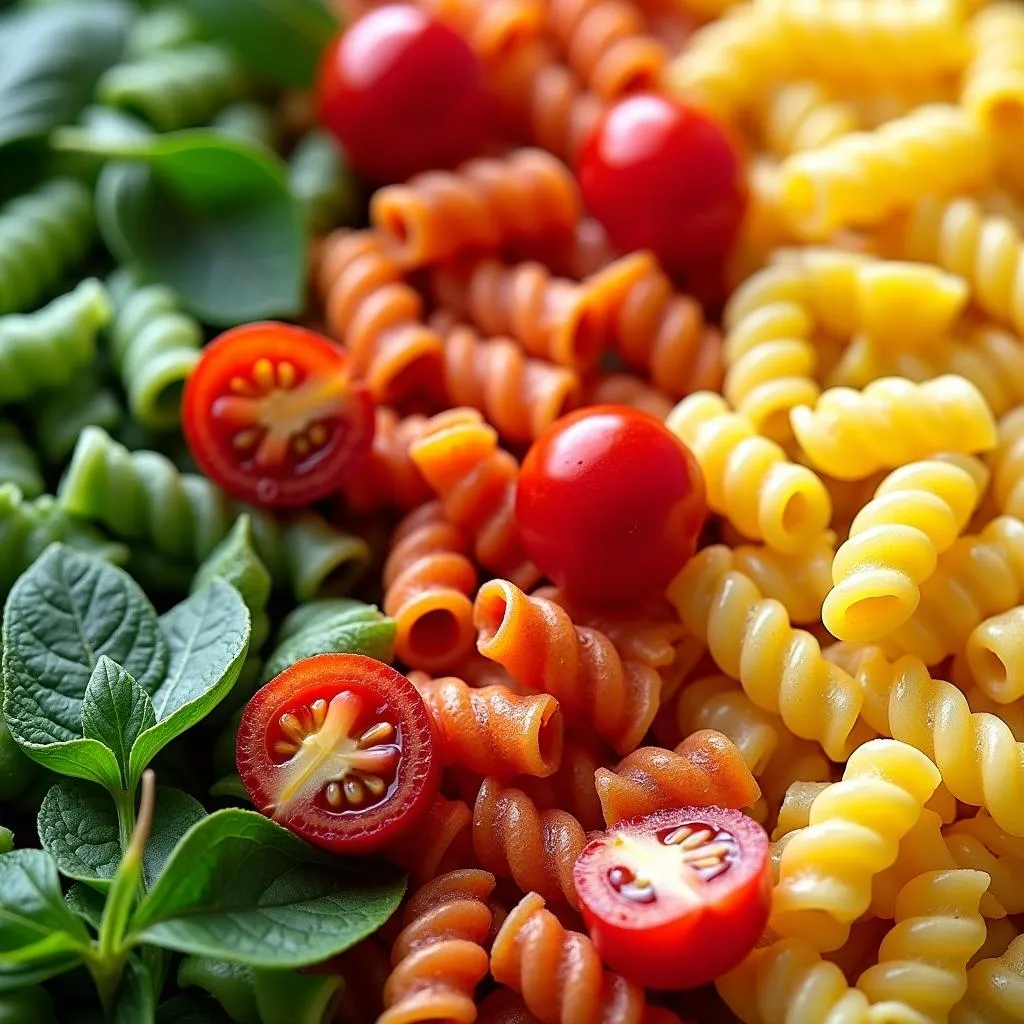We’ve all been there, standing in the pasta aisle, facing a wall of colorful options. Does that tri-color rotini really just look prettier, or is there a taste difference? Let’s dig into the mystery of this multi-hued pasta and see if there’s more to it than meets the eye (or mouth!).
Unraveling the Tri-Color Mystery: It’s All About the Ingredients
Here’s the truth: tri-color rotini generally doesn’t have a drastically different taste compared to its plain counterpart. The difference lies in the added ingredients used for color. Typically, those vibrant hues come from natural sources:
- Green: Spinach or basil are common additions for the green spirals, lending a subtle, earthy flavor that might be noticeable to some palates.
- Red: Tomato is the go-to ingredient for the red spirals, often in the form of tomato paste or powder. This adds a hint of sweetness and tanginess, although it’s usually quite subtle.
 Close-up of tri-color rotini with spinach, tomatoes, and pasta dough
Close-up of tri-color rotini with spinach, tomatoes, and pasta dough
Subtle Flavor Nuances or Visual Appeal?
While the added ingredients do contribute a slight flavor variation, it’s often so subtle that many people can’t detect it, especially when the rotini is coated in a flavorful sauce. However, some individuals with sensitive palates might pick up on the subtle spinach or tomato notes.
So, if the taste difference is minimal, why choose tri-color rotini? The answer often boils down to:
- Visual Appeal: Let’s face it, a plate of tri-color rotini is simply more visually interesting than plain pasta. It can brighten up a dish and make it more appealing, especially for picky eaters.
- Nutritional Boost (Sometimes): Some brands boast added nutritional value in their tri-color rotini, thanks to the spinach or tomato. However, always check the nutritional label, as the amounts can vary significantly.
The Verdict: Taste vs. Aesthetics
Ultimately, the decision of whether to go for tri-color rotini or stick with the classic version comes down to personal preference. If you’re looking for a significant flavor difference, you might be disappointed. However, if you want to add a pop of color to your plate or sneak in some extra veggies, tri-color rotini can be a fun and appealing choice.
FAQs about Tri-Color Rotini:
Q: Does tri-color rotini use artificial dyes?
A: While some brands might use artificial coloring, many opt for natural sources like spinach, tomatoes, and beetroot. Always check the ingredient list to be sure.
Q: Is tri-color rotini more expensive than regular rotini?
A: Tri-color rotini can be slightly more expensive due to the additional ingredients, but the price difference is usually minimal.
Q: Can I use tri-color rotini in any recipe that calls for regular rotini?
A: Absolutely! Tri-color rotini can be used interchangeably with regular rotini in most recipes.
Need expert advice on choosing the perfect pasta for your next culinary creation? Contact us! Call us at 0373298888, email us at [email protected], or visit us at 86 Cầu Giấy, Hà Nội. We’re here to help 24/7!

